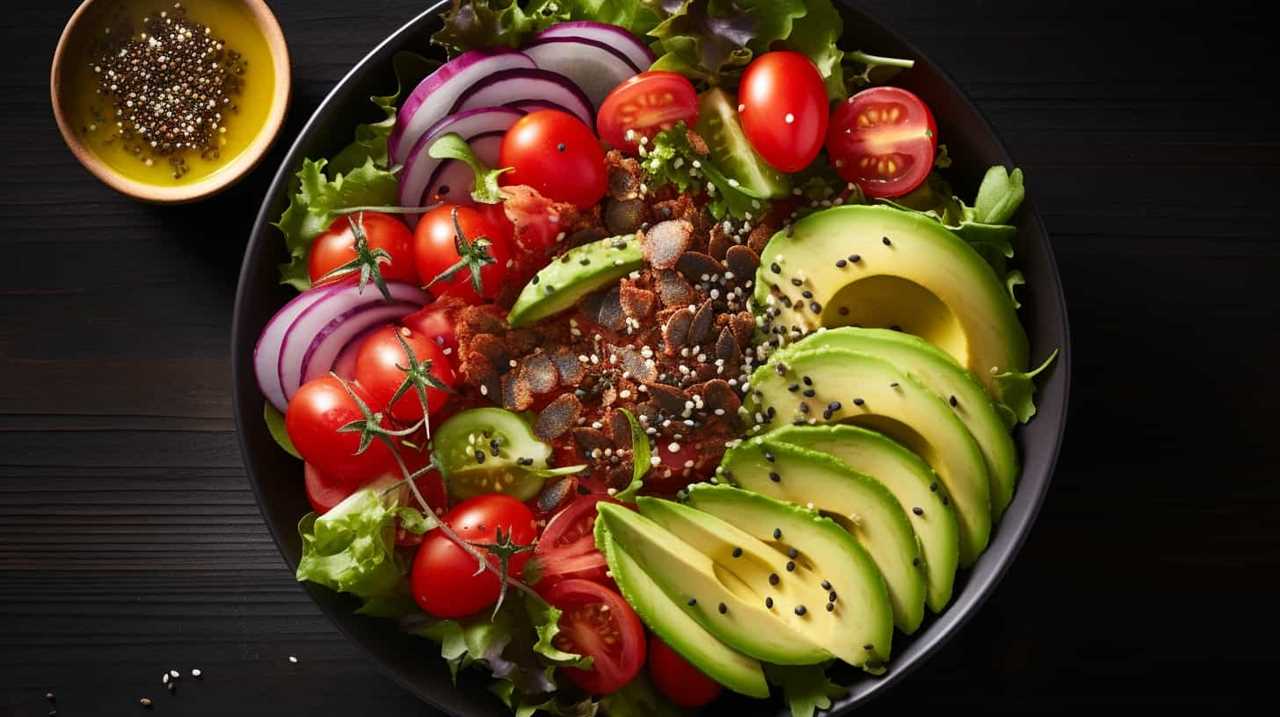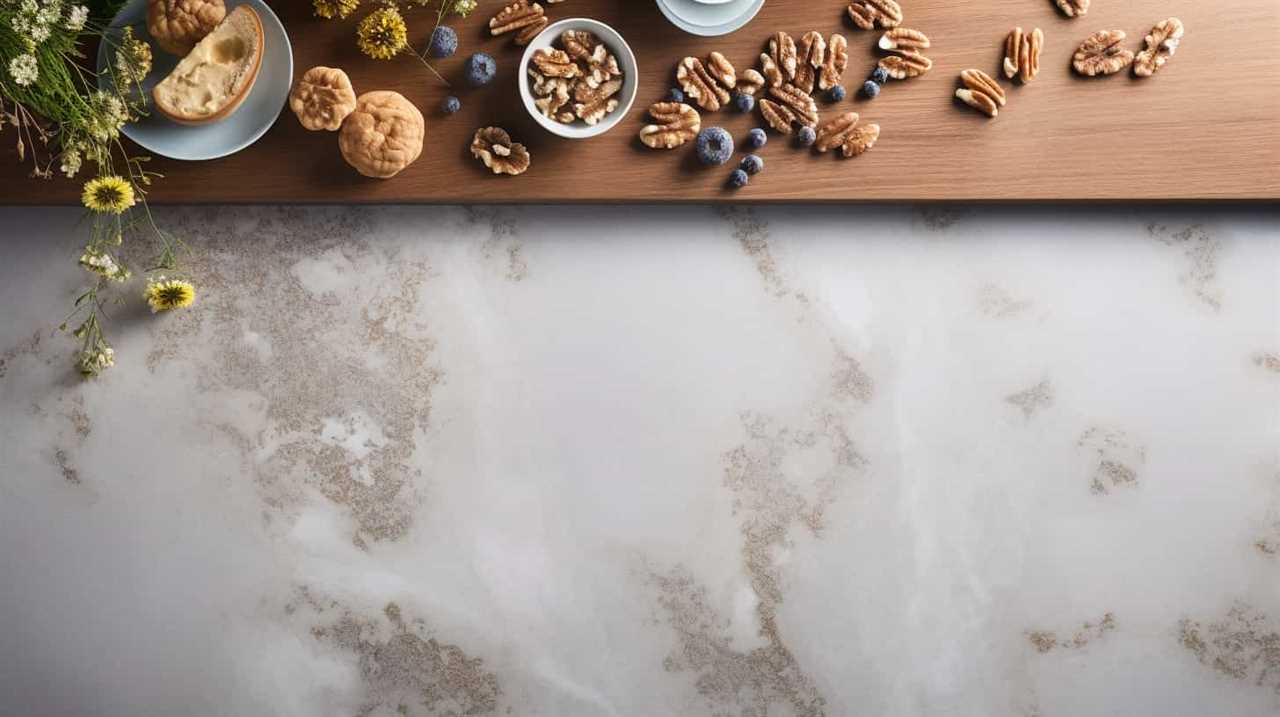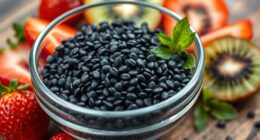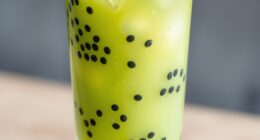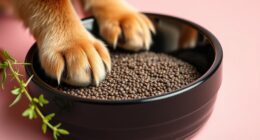Looking for a gluten substitute in your recipes? Take a look at our 15 inventive ways to incorporate chia seeds!
Can chia seed flour really replace traditional baking ingredients? How about using chia gel as a binding agent?
From chia pudding for breakfast to gluten-free crispy chia crackers, we’ve got practical, evidence-based tips for serving others with dietary restrictions.
Get ready to discover new possibilities and create delicious, gluten-free dishes with the power of chia!
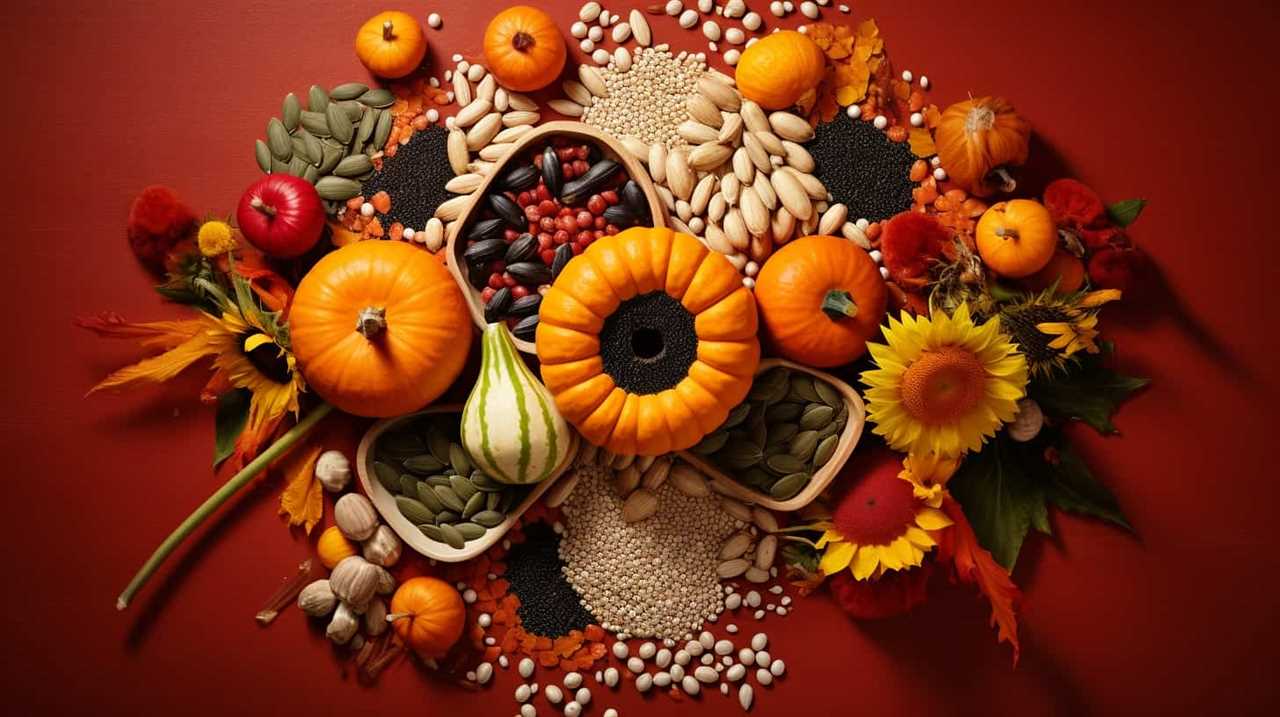
Key Takeaways
- Chia seed flour can be used as a 1:1 substitute for traditional flours in baking.
- Chia gel can be used as a binding agent in vegan baking and as a thickening agent in sauces.
- Chia seeds can be used as a substitute for eggs in baking, creating a gel-like consistency that mimics the texture and binding properties of eggs.
- Chia crumbs can be used as a gluten-free alternative for coating meats, topping casseroles, and salads.
Chia Seed Flour for Baking
Chia seed flour offers a versatile and nutritious alternative to gluten in baking. Not only does it provide a gluten-free option for those with dietary restrictions, but it also brings a host of benefits to the table.
Chia seeds are packed with fiber, protein, and omega-3 fatty acids, making them a nutrient-dense addition to any recipe. When ground into flour, chia seeds can be used as a 1:1 substitute for traditional flours, adding a subtle nutty flavor and a moist texture to baked goods.
To incorporate chia seed flour into your recipes, simply replace a portion or all of the flour called for in the recipe with chia seed flour. Experiment with different ratios to achieve the desired texture.
From pancakes to breads, chia seed flour opens up a world of possibilities for gluten-free baking.
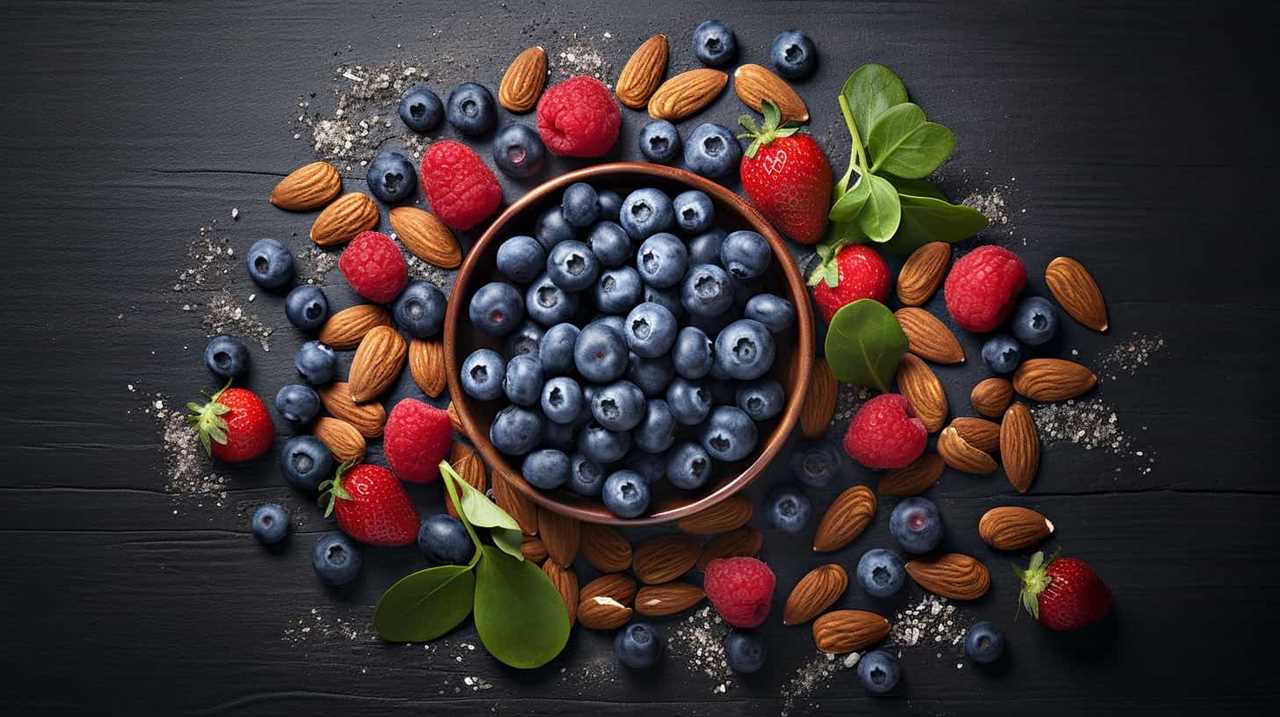
Chia Gel as a Binding Agent
We love using chia gel as a binding agent in gluten-free recipes. Chia gel is made by soaking chia seeds in water until they form a gel-like consistency. This gel can be used in a variety of ways, such as in vegan baking and as a thickening agent in sauces.
Here is a table showing the benefits of using chia gel as a binding agent:
| Benefits of Chia Gel as a Binding Agent |
|---|
| Binds ingredients together |
| Adds moisture to recipes |
| Provides a source of omega-3 fatty acids |
| Helps improve texture |
In vegan baking, chia gel can be used as an egg substitute to bind ingredients together. It also adds moisture to baked goods, resulting in a moist and tender texture. Additionally, chia gel can be used as a thickening agent in sauces, helping to create a smooth and creamy consistency.
Now, let’s move on to the next topic: chia egg replacer in recipes.

Chia Egg Replacer in Recipes
When it comes to baking without eggs, chia seeds can be a game-changer. Not only do they provide a binding effect similar to eggs, but they also add moisture and nutritional benefits to your recipes.
Better Than Eggs
One option for substituting eggs in recipes is to use a chia egg replacer. Chia seeds are a versatile ingredient that can act as a binding agent in various dishes. When mixed with water, chia seeds form a gel-like consistency, which can mimic the texture and binding properties of eggs. This makes chia eggs an excellent alternative for those following a vegan or plant-based diet.
In addition to being a great substitute for eggs, chia seeds also offer numerous health benefits. They’re rich in omega-3 fatty acids, fiber, and antioxidants, which can support heart health and digestion. With their ability to bind ingredients together and provide nutritional value, chia eggs are a valuable tool in vegan baking.
Now, let’s explore the different ways you can incorporate chia seeds into your baking recipes.

Baking With Chia
To incorporate chia seeds into baking recipes, start by using a single tablespoon of chia egg replacer. Chia seeds can be a great substitute for eggs in baking, especially for those who follow a vegan or gluten-free diet. When mixed with water, chia seeds form a gel-like consistency which helps bind the ingredients together, acting as a thickening agent. This gel can replace eggs in recipes such as cakes, cookies, and muffins.
Simply mix one tablespoon of chia seeds with three tablespoons of water and let it sit for about 10 minutes until it thickens. Then, add it to your recipe as you’d an egg. Not only can chia seeds be used in sweet baked goods, but they can also be incorporated into savory dishes such as bread, pizza crusts, and quiches.
Chia Pudding as a Breakfast Option
Chia pudding is a great alternative to traditional grain-based breakfast options. Chia seeds are packed with nutrients like fiber, protein, and healthy fats, making them a nutritious addition to your morning routine.
Plus, chia pudding is incredibly versatile and can be flavored with a variety of ingredients like fruits, nuts, and spices to suit your taste preferences.
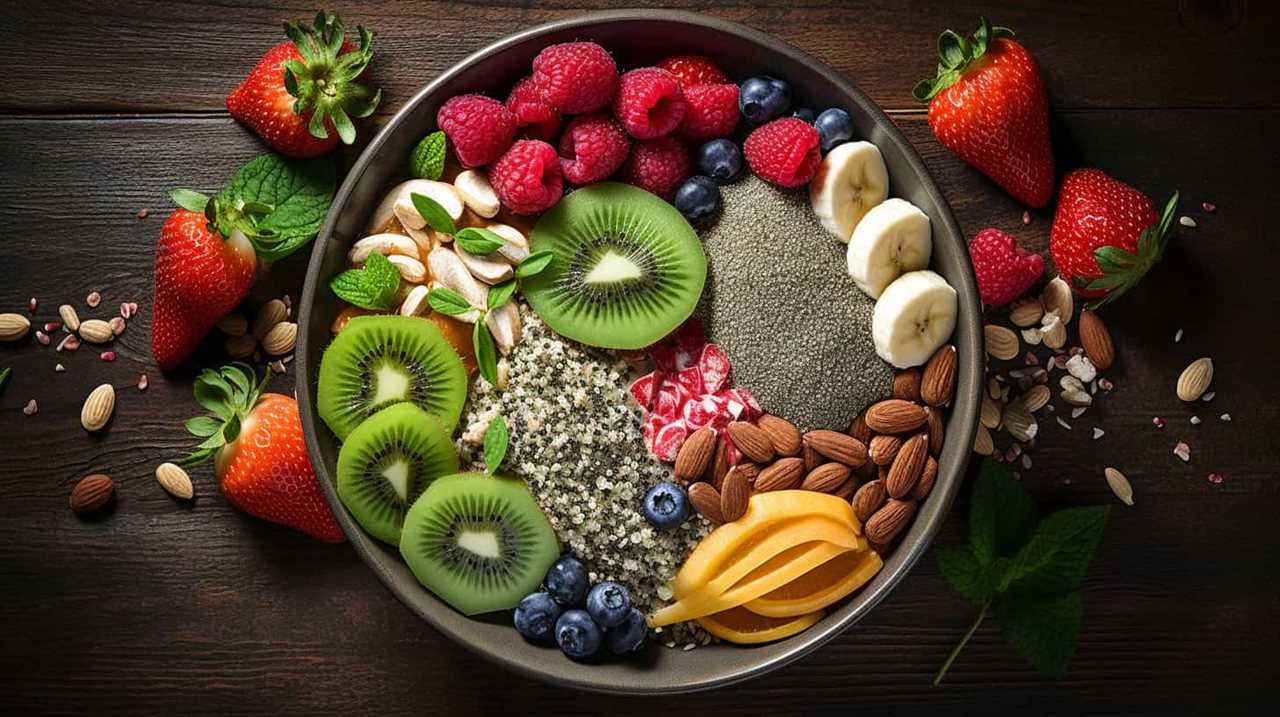
Chia Vs. Traditional Grains
When incorporating chia pudding into our breakfast options, we discover the contrasting benefits between chia and traditional grains. Chia seeds are a popular gluten substitute due to their high fiber content and ability to absorb liquid, creating a gel-like consistency.
Here are three reasons why chia pudding can be a nutritious and satisfying breakfast choice:
- Nutrient-rich: Chia seeds are packed with essential nutrients such as omega-3 fatty acids, protein, and antioxidants. These nutrients promote heart health, reduce inflammation, and support overall well-being.
- Sustained energy: Chia seeds provide a steady release of energy, preventing blood sugar spikes and crashes. This makes them an excellent choice for maintaining energy levels throughout the morning.
- Versatility: Chia pudding can be customized with various toppings and flavors, allowing for endless creativity and enjoyment. From fresh fruits to nuts and spices, you can create a breakfast that suits your taste preferences and dietary needs.
Health Benefits of Chia
After exploring the benefits of chia pudding as a gluten substitute, we can now delve into the health benefits of chia and how it can be a nutritious option for breakfast.
Chia seeds are packed with nutrients that can support overall health and well-being. They’re a fantastic source of fiber, protein, and omega-3 fatty acids. Chia seeds also contain antioxidants, vitamins, and minerals such as calcium, magnesium, and phosphorus.
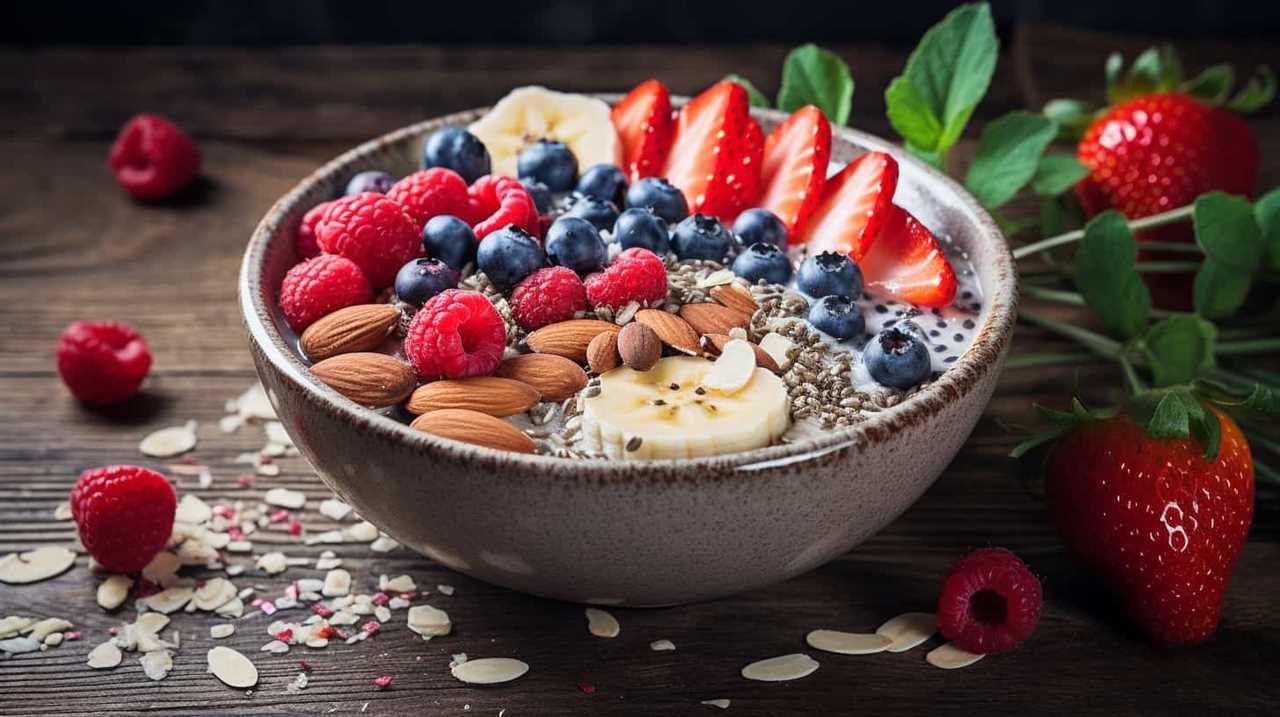
Incorporating chia seeds into your breakfast can help promote satiety, stabilize blood sugar levels, and aid in digestion. One popular way to enjoy chia seeds for breakfast is by making chia seed pudding. This delicious and versatile dish can be customized with various flavors and toppings, making it a convenient and satisfying option for a nutritious start to your day.
Chia Crumbs for Coating
We can achieve a gluten-free coating by substituting bread crumbs with chia crumbs. Chia crumbs are a great alternative for those who are looking to avoid gluten or simply want to incorporate more chia seeds into their diet. Here are three reasons why chia crumbs are the perfect option for coating:
- Health benefits: Chia seeds are packed with nutrients like fiber, protein, and omega-3 fatty acids. By using chia crumbs, you can add an extra dose of these beneficial nutrients to your meals.
- Texture and taste: Chia crumbs have a slightly nutty flavor and a crunchy texture, which adds a delightful twist to your dishes. Whether you’re making chia-crusted chicken or coating vegetables, the chia crumbs will provide a satisfying crunch.
- Versatility: Chia crumbs can be used in a variety of recipes, from coating meats and fish to topping casseroles and salads. They’re a versatile ingredient that can elevate the flavor and texture of your dishes while keeping them gluten-free.
Incorporating chia crumbs into your cooking is a simple and delicious way to substitute traditional bread crumbs. Give them a try and enjoy the benefits of this nutritious alternative.
Chia Bread for Sandwiches
Chia bread is a nutritious and gluten-free option for making delicious sandwiches. With its high fiber and omega-3 fatty acid content, chia bread not only satisfies your taste buds but also provides numerous health benefits.
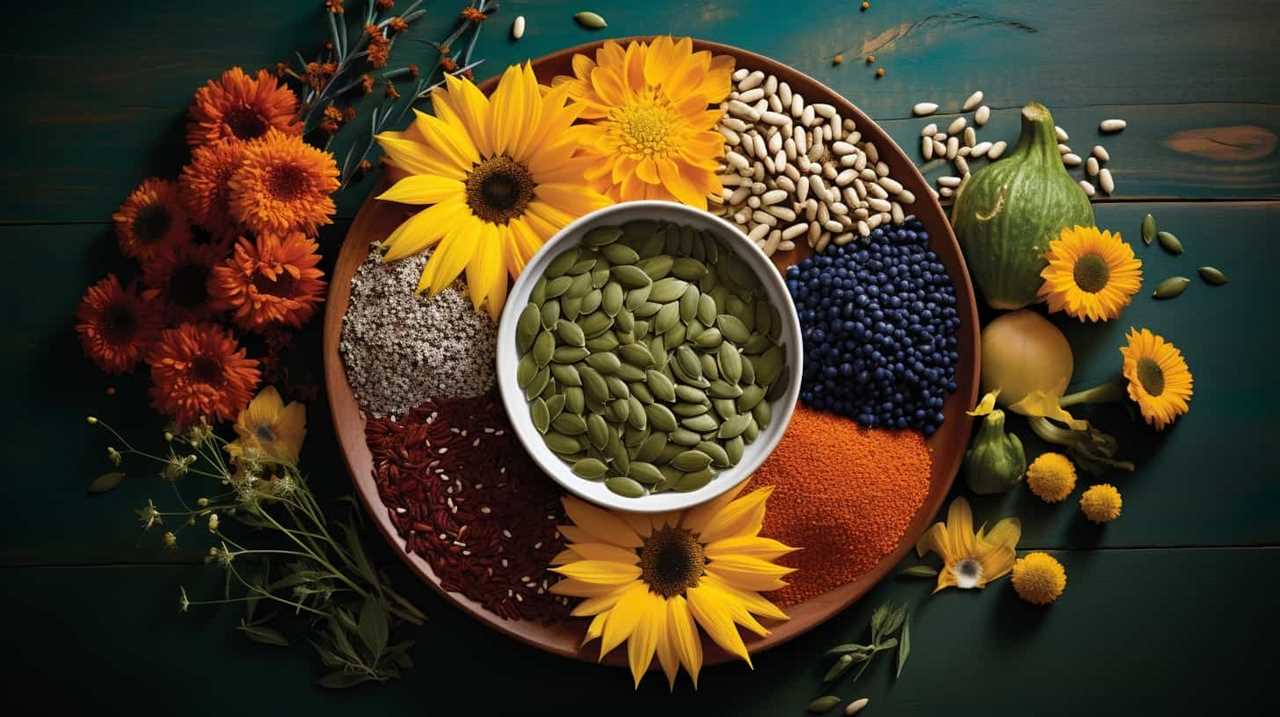
Making chia bread at home is easy and requires just a few simple ingredients. There are various chia bread recipes available online, allowing you to experiment with different flavors and textures.
When it comes to nutrition, chia bread is a great source of protein, fiber, and essential minerals, making it a healthy alternative to traditional bread. It’s also low in carbohydrates and has a low glycemic index, making it suitable for those watching their blood sugar levels.
Chia Tortillas for Wraps
Continuing our exploration of gluten-free alternatives, let’s now delve into the world of chia tortillas for wraps. Chia wraps are a great option for those looking to cut out gluten from their diet while still enjoying their favorite wraps.
Here are three easy and delicious chia tortilla recipes to try:
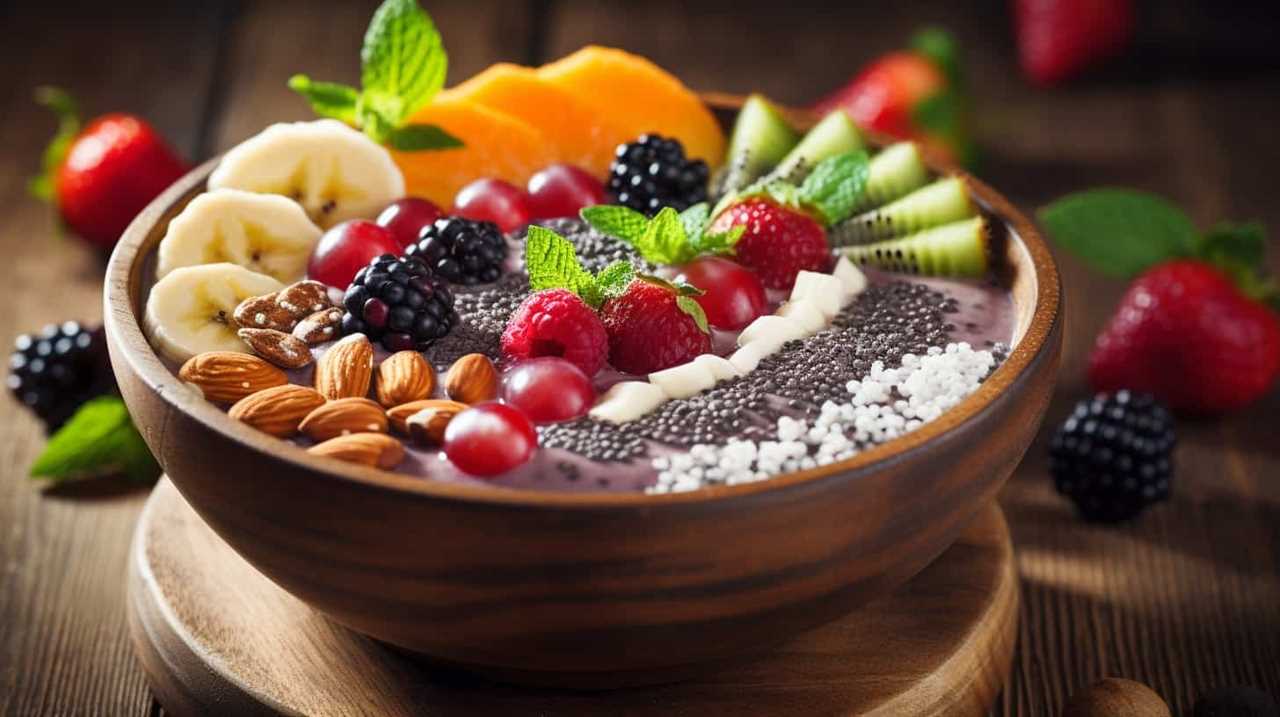
- Chia and Flaxseed Tortilla: Mix chia seeds, flaxseeds, water, salt, and your choice of gluten-free flour to form a dough. Roll out the dough and cook the tortillas on a skillet until golden brown.
- Chia and Quinoa Tortilla: Combine chia seeds, cooked quinoa, water, salt, and gluten-free flour to create a dough. Flatten the dough into tortillas and cook them on a griddle until they’re cooked through.
- Chia and Buckwheat Tortilla: Blend chia seeds, buckwheat flour, water, and salt to make a smooth batter. Pour the batter onto a heated non-stick pan and cook until the tortillas are firm and lightly browned.
With these chia tortilla recipes, you can enjoy gluten-free wraps without compromising on taste or texture. Get creative with your fillings and enjoy a delicious and healthy meal.
Chia Pancakes for a Gluten-Free Breakfast
Chia pancakes can be a great option for those who follow a gluten-free diet.
When comparing chia to wheat flour, chia seeds offer several health benefits such as being high in fiber, omega-3 fatty acids, and antioxidants.
Chia Vs. Wheat Flour
For those looking to enjoy a gluten-free breakfast, we can explore the benefits of substituting wheat flour with chia. Chia flour, made from ground chia seeds, offers a range of advantages over traditional wheat flour.

Here are three key benefits of using chia flour:
- Gluten-free: Chia flour is naturally gluten-free, making it an excellent alternative for those with gluten sensitivities or celiac disease. It allows you to enjoy your favorite breakfast foods without the negative effects of gluten.
- High in fiber and omega-3 fatty acids: Chia seeds are packed with fiber and omega-3 fatty acids, which support digestion, heart health, and brain function. By using chia flour in your pancakes, you can boost the nutritional value of your breakfast.
- Versatility in recipes: Chia flour can be used in a variety of recipes, including pancakes, bread, muffins, and more. Its mild flavor and unique texture make it a versatile ingredient that adds nutritional value to your favorite dishes.
Health Benefits of Chia?
Let’s explore the numerous health benefits of incorporating chia into our diet, especially when enjoying chia pancakes for a gluten-free breakfast. Chia seeds are packed with essential nutrients and offer a wide range of health benefits. They are an excellent source of fiber, which aids digestion, promotes satiety, and helps regulate blood sugar levels. Chia seeds are also rich in omega-3 fatty acids, which are beneficial for heart health and reducing inflammation. Additionally, they contain antioxidants that protect our cells from damage caused by free radicals. Chia seeds are a good source of calcium, magnesium, and phosphorus, which are vital for bone health. They also provide a decent amount of protein, making them a great addition to a plant-based diet. Incorporating chia into our breakfast routine can be a simple and delicious way to boost our nutritional intake and support overall well-being.
| Health Benefits of Chia | Nutritional Value |
|---|---|
| High in fiber, aiding digestion and blood sugar regulation | Excellent source of omega-3 fatty acids for heart health |
| Rich in antioxidants, protecting cells from damage | Good source of calcium, magnesium, and phosphorus for bone health |
| Provides a decent amount of protein for a plant-based diet |
Chia Smoothies as Gluten-Free Meal Replacement
We have found that incorporating chia smoothies into our diet serves as a satisfying and nutritious replacement for gluten-containing meals. Chia seeds are packed with essential nutrients, including fiber, protein, and omega-3 fatty acids, making them a valuable addition to any smoothie recipe.
Here are three benefits of chia in smoothies:
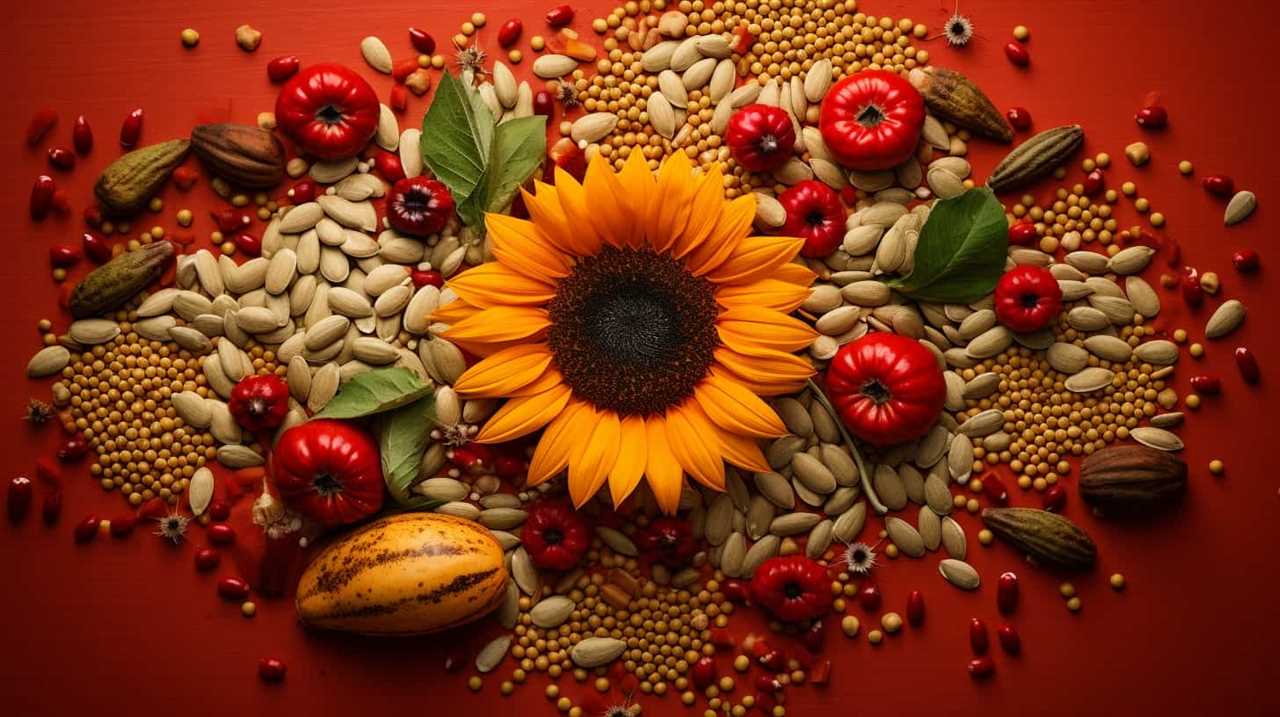
- Increased satiety: Chia seeds absorb liquid and form a gel-like consistency, which can help you feel fuller for longer. This can be especially beneficial when replacing a gluten-filled meal.
- Digestive health support: The high fiber content in chia seeds promotes healthy digestion and can help alleviate symptoms associated with gluten intolerance.
- Nutrient boost: Chia seeds are rich in vitamins and minerals, such as calcium, magnesium, and iron, providing an extra nutritional punch to your smoothie.
By incorporating chia smoothies into our meal plan, we can enjoy a gluten-free alternative that nourishes our bodies and keeps us satisfied throughout the day.
Now, let’s explore another delicious way to enjoy chia as a warm breakfast option: chia porridge.
Chia Porridge as a Warm Breakfast Option
Continuing the discussion on incorporating chia into our gluten-free diet, we can explore the warm and nourishing option of chia porridge for breakfast. Chia porridge is a delicious and satisfying way to start your day, packed with fiber, protein, and omega-3 fatty acids. It is also incredibly versatile, allowing you to customize it to your taste preferences.
Here are a few variations of chia porridge you can try:
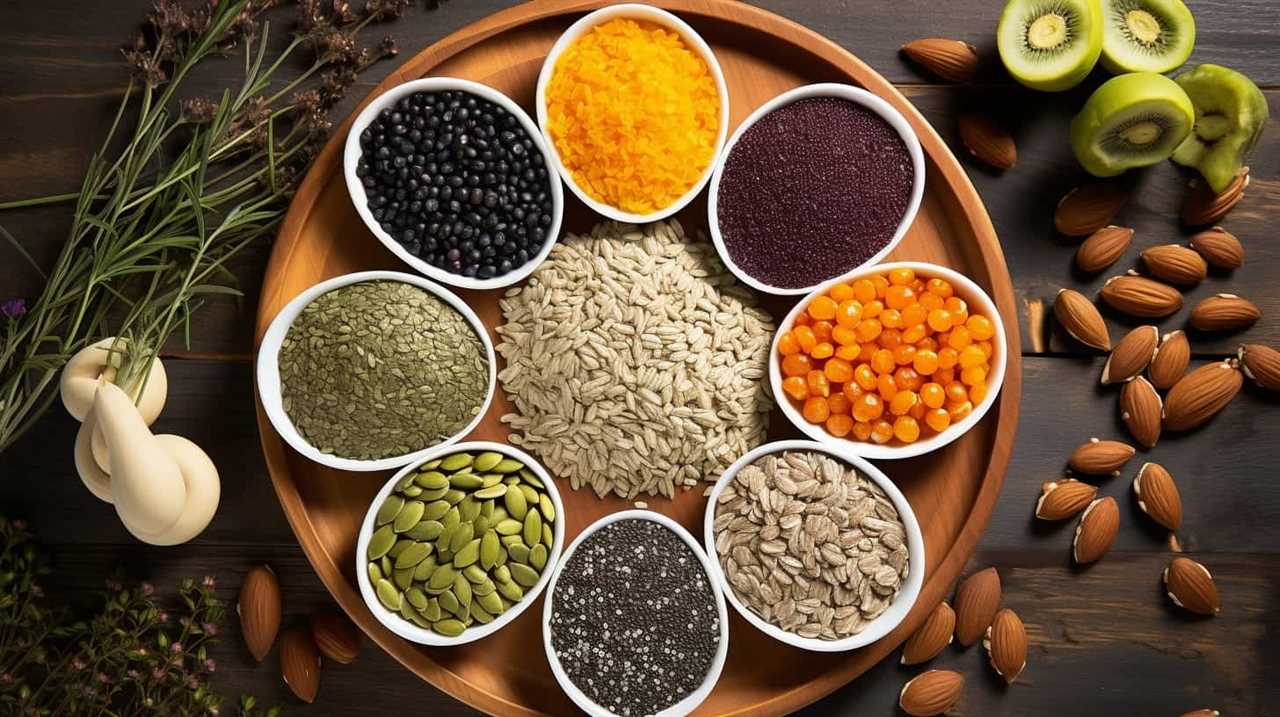
| Variation | Ingredients |
|---|---|
| Classic | Chia seeds, almond milk, honey |
| Chocolate | Chia seeds, cocoa powder, maple syrup |
| Berry Bliss | Chia seeds, mixed berries, coconut milk |
To make your chia porridge even more enjoyable, you can experiment with various toppings. Some popular options include fresh fruit slices, nuts, seeds, coconut flakes, and a drizzle of honey or maple syrup. These toppings not only add flavor and texture but also provide additional nutrients to your breakfast bowl. So, go ahead and get creative with your chia porridge to make it a warm and comforting start to your day.
Chia Energy Bars for On-the-Go Snacks
As we delve into the realm of gluten-free alternatives, we can now explore the convenience and nourishment of chia energy bars, perfect for on-the-go snacks. Chia energy bars aren’t only delicious, but they also provide a great source of energy and essential nutrients.
Here are three reasons why you should consider incorporating chia energy bars into your snack routine:
- Quick and convenient: Chia energy bars are portable and require no preparation. Simply grab one and enjoy a nutritious snack wherever you are.
- Energy boost: Chia seeds are packed with omega-3 fatty acids, fiber, and protein, making them an excellent source of sustained energy. These bars will keep you fueled throughout the day.
- Versatile options: Chia energy bars come in a variety of flavors and combinations. Whether you prefer chocolate, fruit, or nuts, there’s a chia energy bar to suit your taste.
Chia Crackers as a Gluten-Free Crispy Snack
For a satisfying gluten-free crispy snack, try making chia crackers at home using a simple recipe.

Chia crackers aren’t only delicious but also packed with nutrition. Chia seeds are a great source of omega-3 fatty acids, fiber, protein, and antioxidants.
To make chia crackers, you’ll need chia seeds, water, gluten-free flour, salt, and your choice of seasonings. Simply mix all the ingredients together, roll out the dough, and cut it into crackers. Then, bake them until they’re crispy and golden brown.
These homemade chia crackers are a healthier alternative to store-bought gluten-filled crackers and can be enjoyed on their own or paired with dips and spreads.
Now, let’s move on to the next section about chia muffins for a gluten-free treat.

Chia Muffins for a Gluten-Free Treat
Let’s explore how to make delicious gluten-free chia muffins that are packed with nutrition and flavor. Chia seeds are a great substitute for gluten in baking, as they add moisture and a pleasant texture to baked goods. Here’s how you can make chia-infused muffins:
- Start by preheating your oven to 350°F (175°C) and greasing a muffin tin.
- In a bowl, mix together 2 cups of gluten-free flour, 1 tablespoon of baking powder, and a pinch of salt.
- In a separate bowl, whisk together 2 eggs, 1/2 cup of milk (or dairy-free alternative), 1/4 cup of melted coconut oil, and 1/4 cup of honey or maple syrup.
- Add the wet ingredients to the dry ingredients and stir until just combined.
- Fold in 1/4 cup of chia seeds.
- Pour the batter into the prepared muffin tin, filling each cup about three-quarters full.
- Bake for 18-20 minutes, or until a toothpick inserted into the center comes out clean.
- Allow the muffins to cool for a few minutes before removing them from the tin.
- Enjoy these chia-infused muffins as a delicious gluten-free treat that everyone can enjoy!
Chia Pasta for a Gluten-Free Italian Dish
When it comes to Italian cuisine, pasta is a staple. But for those who follow a gluten-free diet, finding a suitable alternative can be a challenge.
Enter chia pasta, a nutritious and gluten-free option that can be used in a variety of Italian dishes. Chia pasta offers several benefits, including being high in fiber, protein, and omega-3 fatty acids, making it a healthier choice compared to traditional wheat-based pasta.
With its versatility and nutritional profile, chia pasta is a great substitute that allows you to enjoy your favorite Italian dishes without compromising on taste or dietary restrictions.
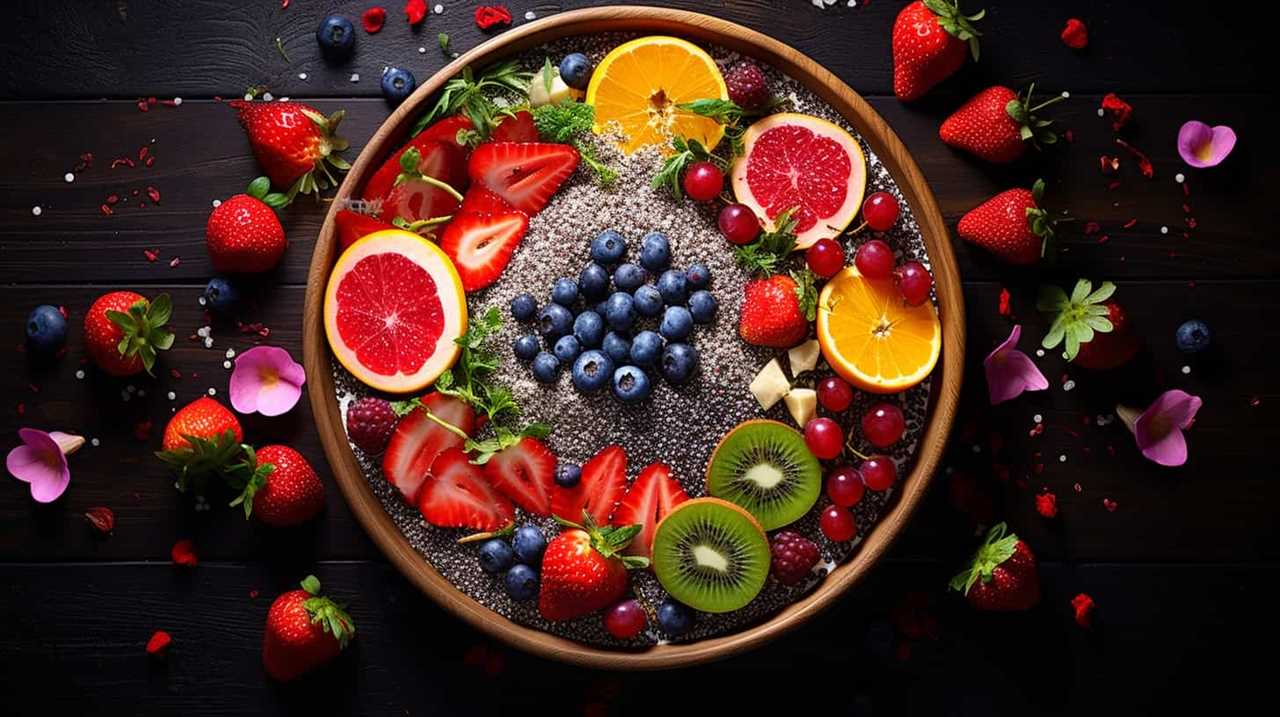
Chia Pasta Benefits
Chia pasta offers numerous benefits for those seeking a gluten-free alternative in Italian dishes. Here are three reasons why incorporating chia pasta into your recipes can be beneficial:
- Gluten-Free Option: Chia pasta is an excellent choice for individuals with gluten sensitivities or those following a gluten-free diet. It allows you to enjoy classic Italian dishes without the worry of gluten-related issues.
- Rich in Nutrients: Chia seeds are packed with essential nutrients like fiber, protein, omega-3 fatty acids, and antioxidants. By using chia pasta, you can boost the nutritional value of your meal.
- Improved Digestion: The high fiber content in chia pasta can help promote healthy digestion and prevent constipation. It aids in regulating blood sugar levels and keeping you full for longer periods.
Gluten-Free Italian Options
We have several gluten-free Italian options that incorporate chia pasta for a delicious and healthy alternative. For those who love pizza but need to avoid gluten, a chia based pizza crust is a great option. Chia seeds can be ground and mixed with gluten-free flour to create a crust that’s both crispy and chewy.
When it comes to pasta dishes, chia infused pasta sauces are a wonderful choice. Chia seeds can be added to tomato-based sauces, pesto, or even creamy Alfredo sauce to give them a nutritional boost. The chia seeds add omega-3 fatty acids, fiber, and protein to the dishes.
These gluten-free Italian options aren’t only tasty but also provide a healthier alternative for those with gluten sensitivities or dietary restrictions.
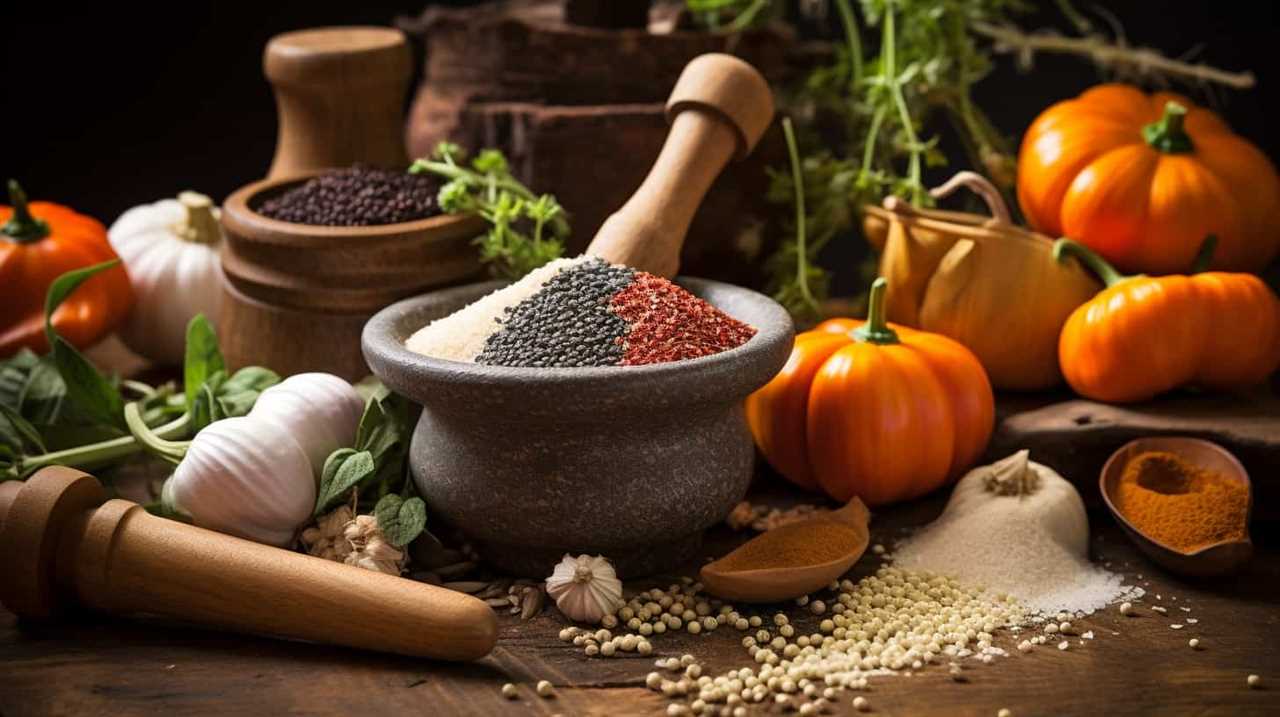
Chia Breading for Gluten-Free Fried Foods
For gluten-free fried foods, one option is to substitute traditional breading with a mixture of chia seeds and other gluten-free ingredients. Chia seeds can be used as a gluten-free coating to achieve a crispy, golden crust on fried foods.
Here are three chia breading alternatives that can be used:
- Chia and almond flour: Combine equal parts of chia seeds and almond flour to create a crunchy, gluten-free breading. The almond flour adds a nutty flavor to the coating, enhancing the overall taste of the dish.
- Chia and cornmeal: Mix chia seeds with cornmeal for a classic Southern-style breading. The combination of chia seeds and cornmeal provides a deliciously crispy texture, perfect for frying chicken or fish.
- Chia and gluten-free breadcrumbs: If you prefer a more traditional breading texture, mix chia seeds with gluten-free breadcrumbs. This combination creates a familiar coating that’s gluten-free and adds a satisfying crunch to your fried foods.
With these chia breading alternatives, you can enjoy your favorite fried foods while maintaining a gluten-free diet.
Frequently Asked Questions
Can Chia Seeds Be Used as a Substitute for Gluten in Baking Bread?
Yes, chia seeds can be used as a substitute for gluten in baking bread. They can be made into a gel that acts as a binder, making it a versatile ingredient in gluten-free baking recipes.
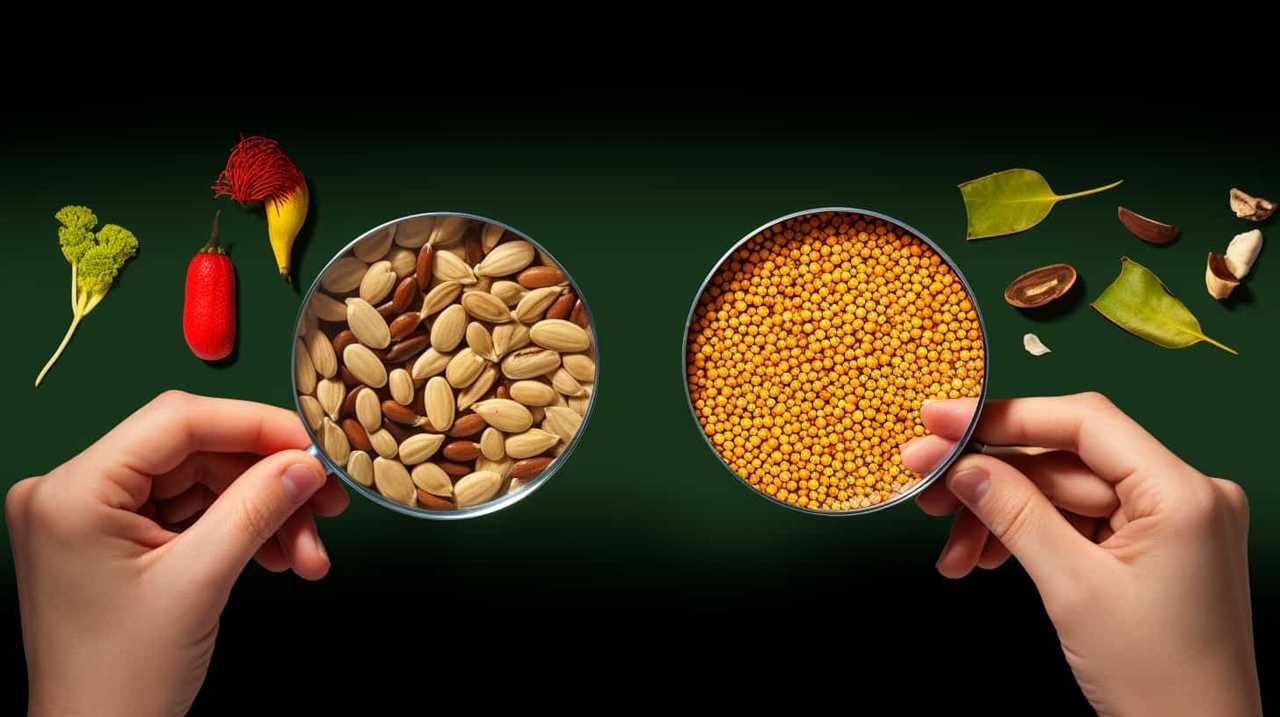
How Can Chia Gel Be Used as a Binding Agent in Recipes?
Chia gel is a versatile binding agent with numerous benefits. It outshines other binding agents due to its ability to add moisture, improve texture, and boost nutritional value. Let us explore its uses and advantages!
What Is the Ratio of Chia Egg Replacer to Regular Eggs in Recipes?
The chia egg replacer ratio is 1 tablespoon of chia seeds to 3 tablespoons of water. It’s a great substitute for eggs in recipes because it adds moisture, binding properties, and nutritional benefits.
How Can Chia Pudding Be Prepared as a Breakfast Option?
To prepare chia pudding as a breakfast option, we can explore various chia pudding recipes and variations. By combining chia seeds with milk or a dairy-free alternative and adding flavors like fruits, nuts, or spices, we can create a nutritious and delicious morning meal.
Can Chia Crumbs Be Used for Coating Different Types of Foods, Not Just Fried Foods?
Yes, chia crumbs can be used to coat a variety of foods, not just fried ones. We can explore different alternatives to gluten by incorporating chia gel in savory dishes, offering a healthier option.
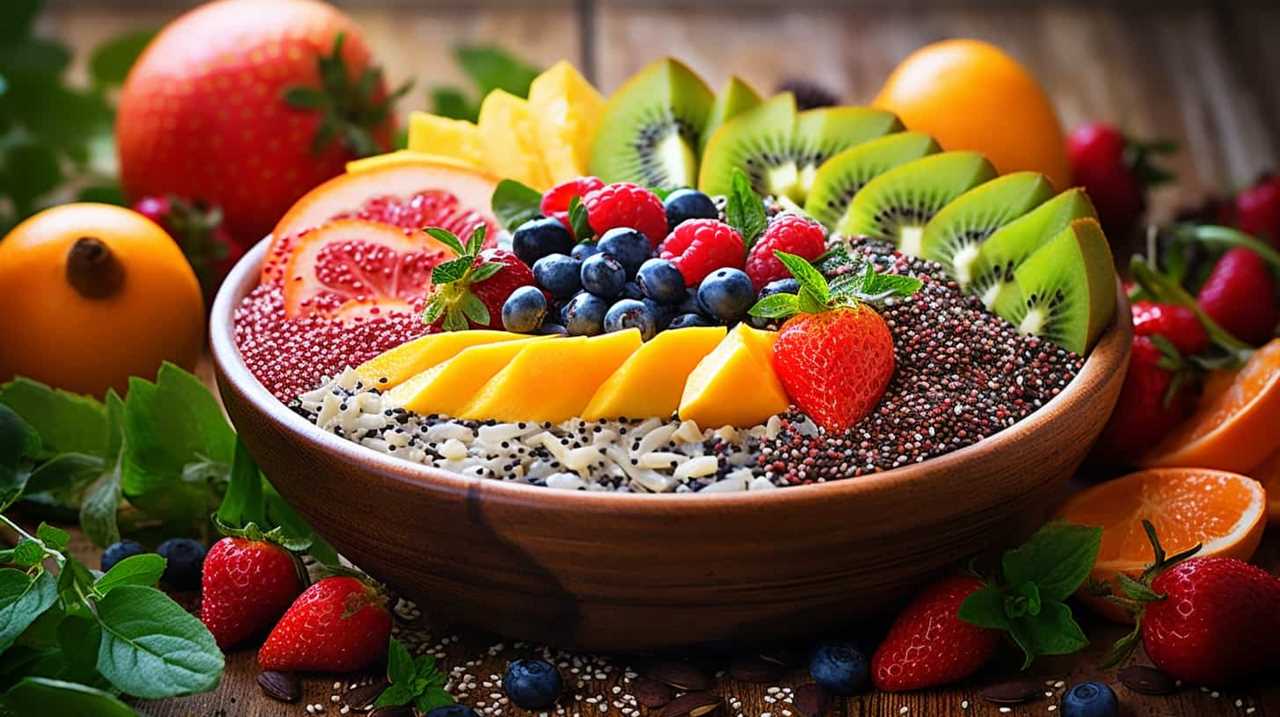
Conclusion
In conclusion, incorporating chia seeds into your gluten-free diet can be a game-changer.
From chia seed flour for baking to chia gel as a binding agent, the versatility of chia is impressive.
With its numerous health benefits and ability to mimic gluten, chia is a practical and evidence-based substitute.
So why not give it a try and discover the delicious possibilities of chia?



